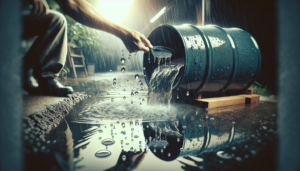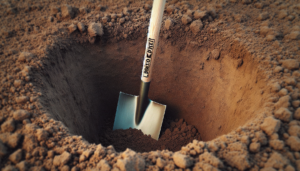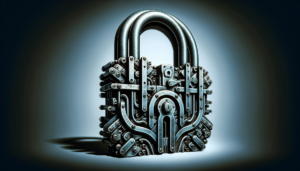
“Filtering Water with Charcoal ON Three” is a video by Survival Dispatch that demonstrates how to filter water using charcoal. The video shows the process of making charcoal in a Dutch oven over a fire, crushing it up, and placing it in a water bottle for filtration. The host explains that pouring the dirty creek water into the filter slowly and using an additional layer of t-shirt can further improve the filtration process. The result is clean water, although it may have a slight taste of charcoal. The host emphasizes that the video is for educational and entertainment purposes only and does not encourage the replication of actions without proper training and precautions.
Filtering Water with Charcoal
Introduction
When it comes to ensuring clean and safe drinking water, there are various methods and techniques available. One such method is filtering water with charcoal. By using activated charcoal, you can effectively remove impurities and contaminants from water, making it suitable for consumption. In this article, we will explore the benefits of filtering water with charcoal, how to make charcoal for water filtration, the process of assembling a water filter, and the science behind charcoal filtration. We will also discuss safety precautions and considerations, as well as compare charcoal filtration to other methods. So let’s dive in and learn more about this simple yet effective technique for obtaining clean drinking water.
Benefits of Filtering Water with Charcoal
Filtering water with charcoal offers several advantages. Firstly, it is a cost-effective method that requires minimal investment. Charcoal is readily available at affordable prices, making it accessible for everyone. Secondly, charcoal has natural adsorption and absorption properties, which allows it to attract and trap impurities and contaminants present in water. This makes charcoal an effective filter medium, removing unpleasant odors, tastes, and harmful substances. Additionally, filtering water with charcoal is a sustainable approach as it does not require electricity or complex equipment. It is a natural and eco-friendly solution to water filtration.
How to Make Charcoal for Water Filtration
Using a Great Big Dutch Oven
To make charcoal for water filtration, you can use a large Dutch oven. Start by collecting dry wood and arranging it inside the Dutch oven. Place the Dutch oven over a fire and let the wood burn. The burning wood will result in the production of charcoal. Once the fire has burned out, allow the charcoal to cool down. Once cooled, you can break the charcoal into small, manageable pieces.
Using a Big Old Fire
Another method to make charcoal is by using a big fire. Create a fire using dry wood and let it burn until there are large chunks of charcoal left. Once the fire has extinguished, let the charcoal cool down before handling it. Break the charcoal into smaller pieces that can easily fit into your water filter.
Preparing the Water Bottle
Cutting off the Bottom of the Water Bottle
To prepare the water bottle for filtration, start by cutting off the bottom. This will create an opening where the filtered water can flow out. Ensure the cut is smooth and even to avoid any sharp edges that may cause injury during handling.
Crushing the Charcoal
Next, you’ll need to crush the charcoal into smaller particles. This can be done by placing the charcoal in a cloth or mortar and using a pestle or any heavy object to crush it. The crushed charcoal should have a granular consistency, similar to coarse sand.
Assembling the Water Filter
Placing the Charcoal on Top of the Bottle
The next step in the water filtration process is to place the crushed charcoal on top of the water bottle. The charcoal acts as the filtration medium, trapping impurities as water passes through it. Ensure that the charcoal is evenly distributed and covers the entire opening of the bottle.
Double Layering the T-Shirt for Extra Filtration
To enhance the filtration process, double layer a clean T-shirt and place it on top of the charcoal. This provides an additional barrier to further remove any remaining impurities. The T-shirt acts as a pre-filter, preventing larger particles from entering the charcoal layer and clogging the filter.
Filtering the Water
Pouring the Dirty Creek Water Slowly
To filter the water, slowly pour the dirty creek water into the assembled filter. Pouring it slowly allows the water to pass through the charcoal and T-shirt layers, giving them sufficient time to filter out impurities. Take care while pouring to prevent any spillage or overflow.
Taste and Consistency of Filtered Water
Once the water has passed through the filter, you can collect the filtered water in a clean container. It is important to note that the filtered water may have a slight taste of charcoal due to the presence of charcoal particles. However, this taste is usually mild and does not affect the overall quality of the water. The filtered water should be clear, odorless, and free from any visible impurities.
Additional Tips for Water Filtration with Charcoal
Using Charcoal Pieces to Purify Water While Camping
If you are going camping or on a hiking trip and need a portable water filtration method, you can use small pieces of charcoal. Carry the charcoal pieces in a container or bag and place them directly in a water source, such as a river or lake. Allow the charcoal pieces to sit in the water for some time to filter out impurities before consuming.
Replacing Charcoal Regularly for Best Results
To maintain the effectiveness of the charcoal filter, it is essential to replace the charcoal regularly. Over time, the charcoal becomes saturated with impurities and loses its ability to filter water effectively. Depending on the frequency of use and the condition of the water being filtered, it is recommended to replace the charcoal every few weeks or when you notice a decrease in filtration efficiency.
Comparing Charcoal Filtration to Other Methods
Pros and Cons of Charcoal Filtration
Charcoal filtration has several advantages compared to other methods. It is a simple and inexpensive technique that can be easily done at home using readily available materials. Charcoal filtration effectively removes impurities and contaminants while retaining essential minerals present in the water. However, charcoal filtration may not remove certain chemicals, viruses, or heavy metals. It is important to understand the limitations of charcoal filtration and consider alternative methods for specific water purification needs.
Comparison to Boiling and Chemical Treatments
Compared to boiling water, charcoal filtration does not require heat or additional energy sources. It is a passive method that does not alter the taste or temperature of the water. However, boiling water is more effective in killing harmful bacteria and viruses. Chemical treatments, such as using chlorine or iodine, can also be used to purify water. These treatments are highly effective but may leave a residual taste or require longer processing times. Each method has its own advantages and limitations, and the choice depends on the specific circumstances and water quality.
The Science Behind Charcoal Filtration
Adsorption and Absorption Properties of Charcoal
Charcoal has unique properties that make it an excellent filter medium. It has both adsorption and absorption properties. Adsorption refers to the attachment of impurities to the surface of the charcoal, while absorption refers to the penetration and trapping of impurities within the porous structure of the charcoal. These properties allow charcoal to effectively remove contaminants and improve the overall quality of water.
Effectiveness in Removing Impurities
The porous structure of charcoal provides a large surface area for impurities to adhere to. It effectively removes sediment, bacteria, chlorine, organic compounds, and some volatile chemicals. However, it may not remove certain dissolved substances, heavy metals, or viruses. It is important to understand the specific impurities present in the water you are filtering and assess the suitability of charcoal filtration.
Safety Precautions and Considerations
Using Charcoal from Safe Sources
When making charcoal for water filtration, it is crucial to use charcoal from safe sources. Avoid using charcoal that may contain harmful chemicals, additives, or contaminants. It is recommended to use natural, activated charcoal specifically made for water filtration purposes.
Consulting Local Authorities for Water Safety
In situations where water safety is a major concern, such as during natural disasters or emergencies, it is always advisable to consult local authorities or follow guidelines provided by relevant organizations. They can provide accurate information on the safety of different water sources and recommend appropriate water treatment methods.
Conclusion
Filtering water with charcoal is a practical and effective method for obtaining clean and safe drinking water. It offers numerous benefits such as affordability, sustainability, and ease of use. By following the step-by-step process of making charcoal, assembling a water filter, and understanding the science behind charcoal filtration, you can ensure the availability of clean water in survival situations. Remember to prioritize safety precautions, consider the limitations of charcoal filtration, and explore alternative methods when necessary. Clean water is essential for survival, and by utilizing the power of charcoal, you can have peace of mind knowing that your water is pure and fit for consumption.







